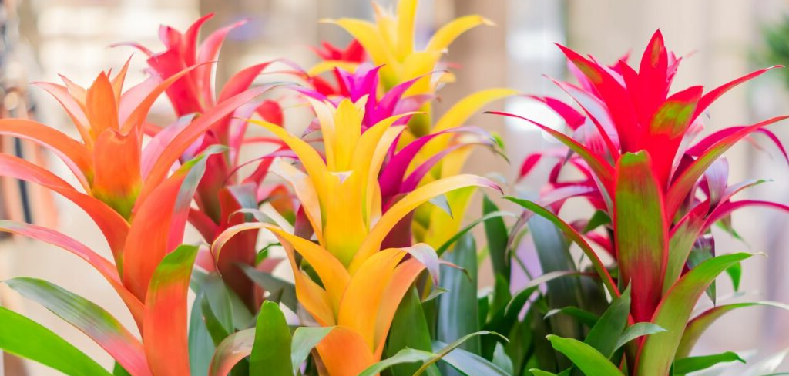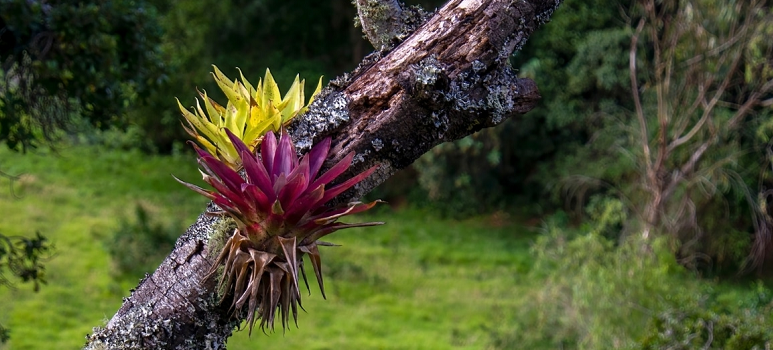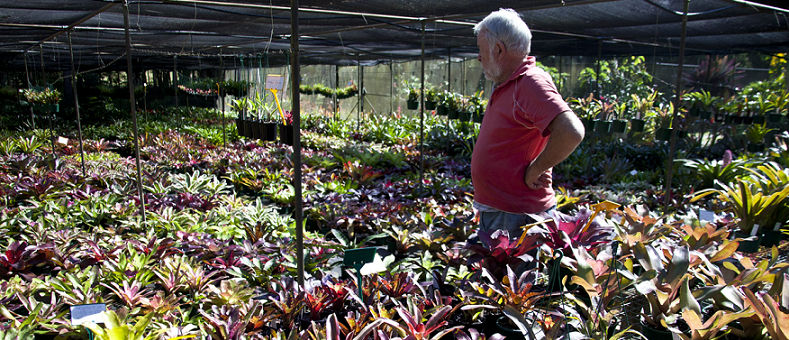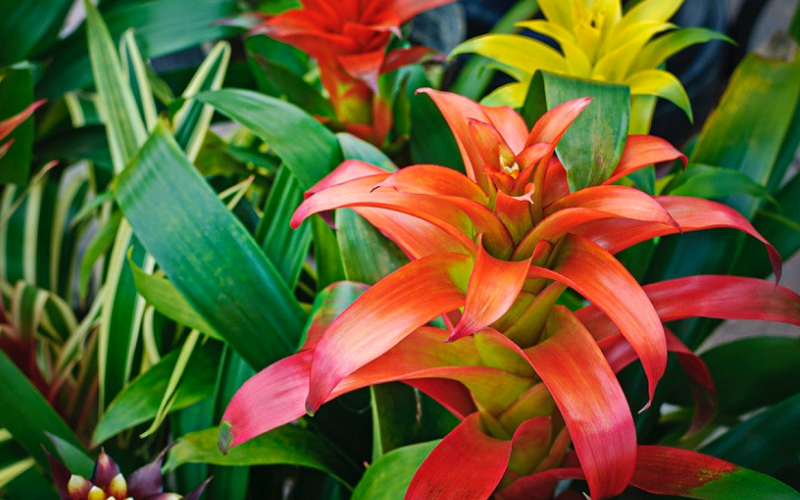Bromeliads are a diverse group of tropical plants known for their vibrant and unusual foliage. Cultivating bromeliads can be both an art and a science, as it requires a combination of creativity and knowledge to successfully grow and care for these exotic plants. Here we delve into the biology of bromeliads, their environmental requirements, and the various methods of propagation. We will also cover the common pests and diseases that bromeliads face, and provide tips for keeping them healthy and thriving.
What Are Bromeliads?
Bromeliads are a family of flowering plants that are native to tropical regions of the Americas. They are characterized by their distinctive rosette-forming foliage and brightly colored blooms that can last for several months. There are over 3,000 species of bromeliads, ranging in size from tiny epiphytes to large terrestrial plants. They can be grown both indoors and outdoors, and are prized for their unique beauty and versatility in decorating. Some popular bromeliad species include the pineapple, Spanish moss, and the red-leaved Aechmea.
Biology of Bromeliads
Bromeliads are a unique group of plants that have evolved to thrive in tropical environments. They have adapted several unique biological features that allow them to survive in areas with varying climates, limited soil resources, and high humidity.
Their foliage is often arranged in a rosette pattern, which helps to conserve moisture and collect rainwater. This water can provide nutrients and a habitat for microorganisms, which the bromeliads can feed on. Many bromeliads have specialized structures called trichomes, which are tiny hair-like structures that help to absorb moisture from the air.
In terms of reproduction, bromeliads are known for their long-lasting blooms, which can last for several months. Once a bromeliad blooms, it produces offsets or pups, which can be propagated to create new plants. Some species of bromeliads are epiphytic, meaning they grow on other plants, while others are terrestrial and grow in soil.

Environmental Requirements of Bromeliads
Bromeliads have specific environmental requirements that must be met in order to thrive. Light is one of the most important factors, as bromeliads need bright, indirect light to grow well. Some species can tolerate full sun, while others do better in partial shade. It’s important to know the specific light requirements of your bromeliad and adjust its placement accordingly.
Temperature is another important factor in bromeliad cultivation. Most species prefer warm temperatures between 60-85°F and do not tolerate cold temperatures well. Humidity is also important, as bromeliads are native to tropical regions and need higher levels of humidity to thrive. Regular misting or placement near a humidifier can help to maintain the proper level of humidity.
Water is another critical factor, as bromeliads store water in their rosette of leaves. It’s important to keep the central cup filled with water, but not to over-water, as this can lead to root rot. Soil is not as important as it is for other plants, as many bromeliads are epiphytic and do not grow in soil. For those that are grown in soil, a well-draining mixture is essential to prevent root rot.
Providing the proper environmental conditions is crucial for the success of bromeliad cultivation. By understanding their specific requirements, you can create a suitable environment for these exotic plants to thrive.
Propagation of Bromeliads
Bromeliads can be propagated in several ways, including division, offsets, and seeds. Division is a common method of propagation, where a mature plant is separated into smaller plants. This is typically done when the plant has produced offsets or pups, which can be carefully removed and planted in their own containers.
Offsets, also known as pups, are small plants that grow from the base of the mature plant. These can be removed from the parent plant and planted in their own containers, where they will grow into mature plants over time.
Seed propagation is a less common method of propagating bromeliads, as many species produce only a limited number of seeds. However, for those that do produce seeds, they can be collected, germinated, and grown into mature plants.

Regardless of the method used, it’s important to provide the proper growing conditions and care to ensure successful propagation. This includes providing bright, indirect light, warm temperatures, and high humidity, as well as proper watering and fertilization.
Propagating bromeliads can be a rewarding experience that allows you to expand your collection and enjoy these unique and exotic plants for years to come. With a little patience and care, you can successfully propagate bromeliads and enjoy their beauty in your own home.
Pests and Diseases Affecting Bromeliads
Bromeliads are generally tough and hardy plants, but they are not immune to pests and diseases. Some common pests that affect bromeliads include mealybugs, scale insects, and spider mites. These pests can damage the foliage, sap the plant’s energy, and spread disease.
In order to prevent and treat pests, it’s important to regularly inspect your bromeliads for signs of infestation. Early detection is key, as pests can quickly multiply and become more difficult to control. Physical removal, such as wiping the leaves with a damp cloth, can help to remove light infestations. For more serious infestations, chemical controls, such as insecticidal soap or neem oil, can be used.
In addition to pests, bromeliads can also be affected by various diseases, including root rot, fungal infections, and bacterial infections. Root rot is a common problem that occurs when the plant is overwatered or grown in poorly draining soil. Fungal and bacterial infections can also cause damage to the foliage, roots, and other parts of the plant.
To prevent and treat diseases, it’s important to provide the proper growing conditions, including proper light, temperature, and humidity. Maintaining a clean and hygienic growing environment can also help to prevent the spread of disease. If a disease is detected, it’s important to isolate the affected plant and treat it promptly to prevent the spread of the disease to other plants in your collection.
Pests and diseases can be a challenge for bromeliad growers, but with proper care and attention, they can be prevented and treated effectively. Regular inspections, proper growing conditions, and prompt treatment can help to ensure the health and beauty of your bromeliad collection.

Caring for Bromeliads
Caring for bromeliads requires a combination of proper environmental conditions and regular maintenance. One of the most important factors is providing the right amount of light, as bromeliads need bright, indirect light to grow well. This can be achieved by placing the plants near a bright window or under grow lights.
Temperature is another important factor, as bromeliads prefer warm temperatures between 60-85°F. Humidity is also critical, as bromeliads are native to tropical regions and need higher levels of humidity to thrive. Regular misting or placement near a humidifier can help to maintain the proper level of humidity.
Water is another critical aspect of bromeliad care, as bromeliads store water in their rosette of leaves. It’s important to keep the central cup filled with water, but not to over-water, as this can lead to root rot. Soil is not as important as it is for other plants, as many bromeliads are epiphytic and do not grow in soil. For those that are grown in soil, a well-draining mixture is essential to prevent root rot.
Fertilization is also important for bromeliads, as they need nutrients to grow and produce vibrant blooms. A balanced fertilizer, applied at the recommended frequency, can provide the necessary nutrients. Repotting is also important, as bromeliads will eventually outgrow their containers and need to be repotted into larger containers.
Caring for bromeliads requires a combination of proper environmental conditions, regular maintenance, and proper fertilization. By providing the right growing conditions and regular attention, you can ensure the health and beauty of your bromeliad collection for years to come.

